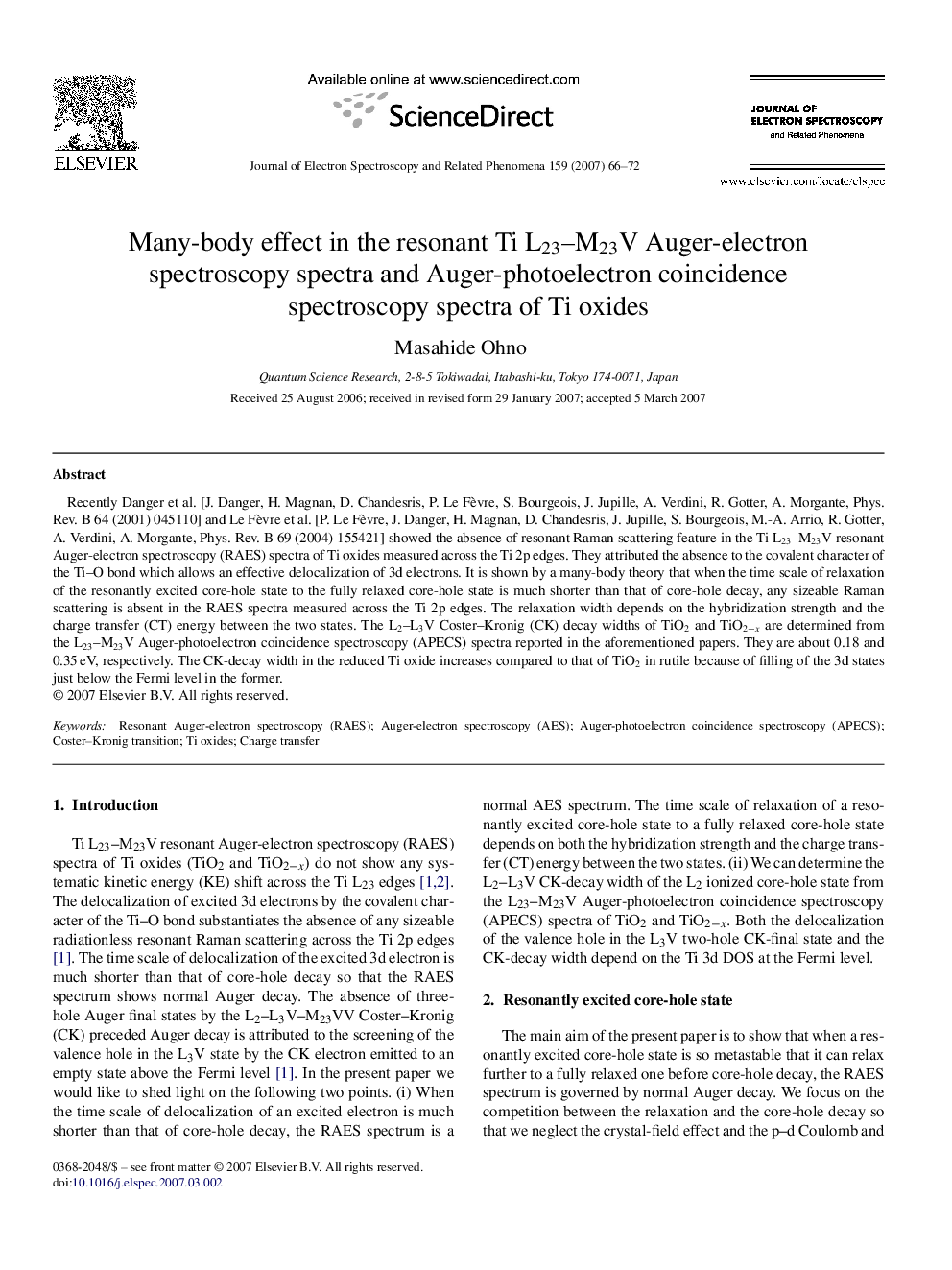| Article ID | Journal | Published Year | Pages | File Type |
|---|---|---|---|---|
| 5396995 | Journal of Electron Spectroscopy and Related Phenomena | 2007 | 7 Pages |
Abstract
Recently Danger et al. [J. Danger, H. Magnan, D. Chandesris, P. Le Fèvre, S. Bourgeois, J. Jupille, A. Verdini, R. Gotter, A. Morgante, Phys. Rev. B 64 (2001) 045110] and Le Fèvre et al. [P. Le Fèvre, J. Danger, H. Magnan, D. Chandesris, J. Jupille, S. Bourgeois, M.-A. Arrio, R. Gotter, A. Verdini, A. Morgante, Phys. Rev. B 69 (2004) 155421] showed the absence of resonant Raman scattering feature in the Ti L23-M23V resonant Auger-electron spectroscopy (RAES) spectra of Ti oxides measured across the Ti 2p edges. They attributed the absence to the covalent character of the Ti-O bond which allows an effective delocalization of 3d electrons. It is shown by a many-body theory that when the time scale of relaxation of the resonantly excited core-hole state to the fully relaxed core-hole state is much shorter than that of core-hole decay, any sizeable Raman scattering is absent in the RAES spectra measured across the Ti 2p edges. The relaxation width depends on the hybridization strength and the charge transfer (CT) energy between the two states. The L2-L3V Coster-Kronig (CK) decay widths of TiO2 and TiO2âx are determined from the L23-M23V Auger-photoelectron coincidence spectroscopy (APECS) spectra reported in the aforementioned papers. They are about 0.18 and 0.35 eV, respectively. The CK-decay width in the reduced Ti oxide increases compared to that of TiO2 in rutile because of filling of the 3d states just below the Fermi level in the former.
Keywords
Related Topics
Physical Sciences and Engineering
Chemistry
Physical and Theoretical Chemistry
Authors
Masahide Ohno,
